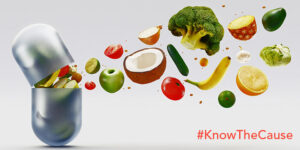

|
Candida is a yeast (mold or fungus) which frequently grows in the intestines of humans. Candida can kill off good bacteria in the intestines. Candida in the intestines can also produce significant amount of ethanol (beverage alcohol), acetaldehyde (a toxic chemical) and a number of highly allergenic (allergy causing) proteins. |
Candida can also infect other parts of the body besides intestines. Candida frequently grows on the skin, mouth and urinary/ sex organs. Candida growth on the skin is particularly common in moist areas such as between the fingers and toes, in armpits, under breasts and in the groin.
Topical (skin applied) anti-fungal drugs are often effective for getting rid of Candida infections on the skin. Keeping skin clean and dry can also reduce risk of Candida skin infections. Oral drugs are sometimes used to treat Candida infections- such drugs include nystatin, fluconazole (Diflucan), ketoconazole (Nizoral) and itraconazole (Sporanox).A new class of anti-fungal drugs called echinocandins (such as Caspofungin) are also effective in treating Candida infections- but these drugs must generally be given by injection.
Many factors can increase risk of intestinal and skin Candida infections- including taking antibiotics orally (by mouth), eating a high sugar diet, diabetes, certain forms of cancer like leukemia and lymphoma, patients with organ or bone marrow transplants (who are given anti-rejection drugs which suppress the immune system), and patients with HIV/AIDS.
Doug Kaufmann’s phase diets are low in sugar and are often helpful in controlling Candida growth in the intestines and skin. Several studies have reported that eating probiotic bacteria (such as Lactobacillus or Bifidobacterium) from either yogurt or probiotic capsules can reduce risk of Candida growth in the intestines, skin, sex organs and other parts of the body.
A good article on Candidosis or Candida skin infections was written by Lopez-Martinez and was published in the March 2010 Clinics in Dermatology.
Doug Kaufmann has written many books that cover a full range or health issues. Find out which of his books best suits you by clicking the button below.
Doug Kaufmann developed his diet after years studying the clinical effects of pathogenic fungi on the body. Fungi and yeasts can become parasitic organisms on and inside our body, causing health problems that can be difficult to diagnose. Learn more about the Kaufmann Diet, change your life and know the cause.
We encourage all visitors to this site to take some time and study these technical articles prior to initiating lifestyle changes, including dietary changes and to do so with their physician’s awareness and approval. The articles posted in this link are scientific and with few exceptions are taken from medical journals familiar to healthcare workers.
Looking for help assembling antifungal Kaufmann Diet approved recipes for breakfast, lunch or dinner? We have several videos, books and recipe write ups here on Know the Cause that will help your health journey. The recipes in this section are so good, you’ll feel like you’re indulging. No sacrifice needed! Enjoy.
© 2024 Mediatriton Inc. All Rights Reserved • Website by Skynet Solutions